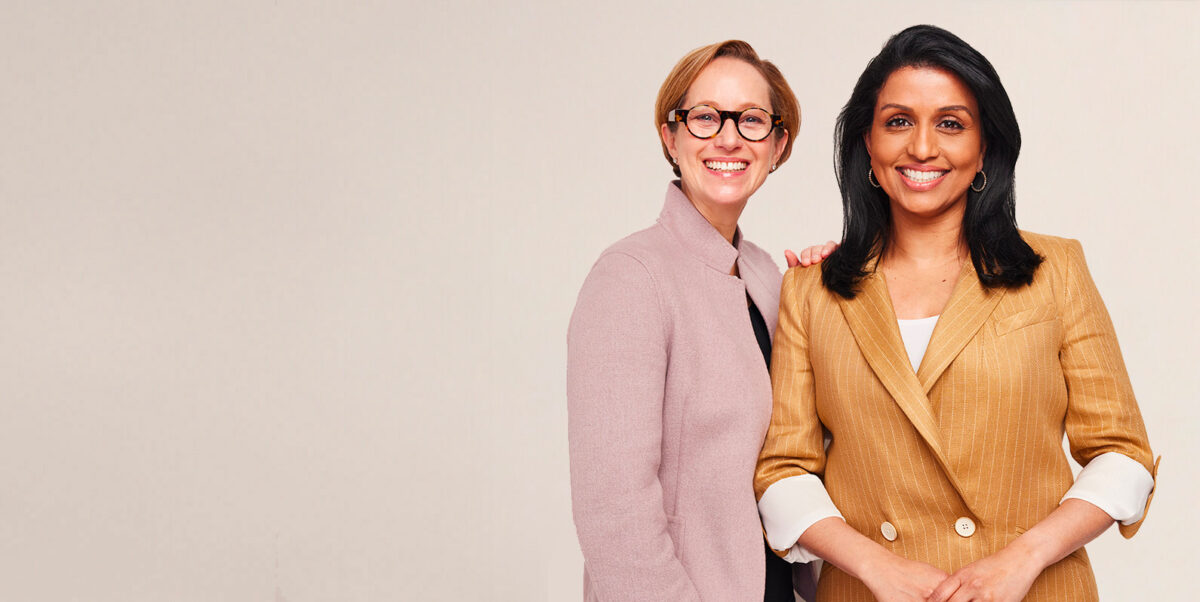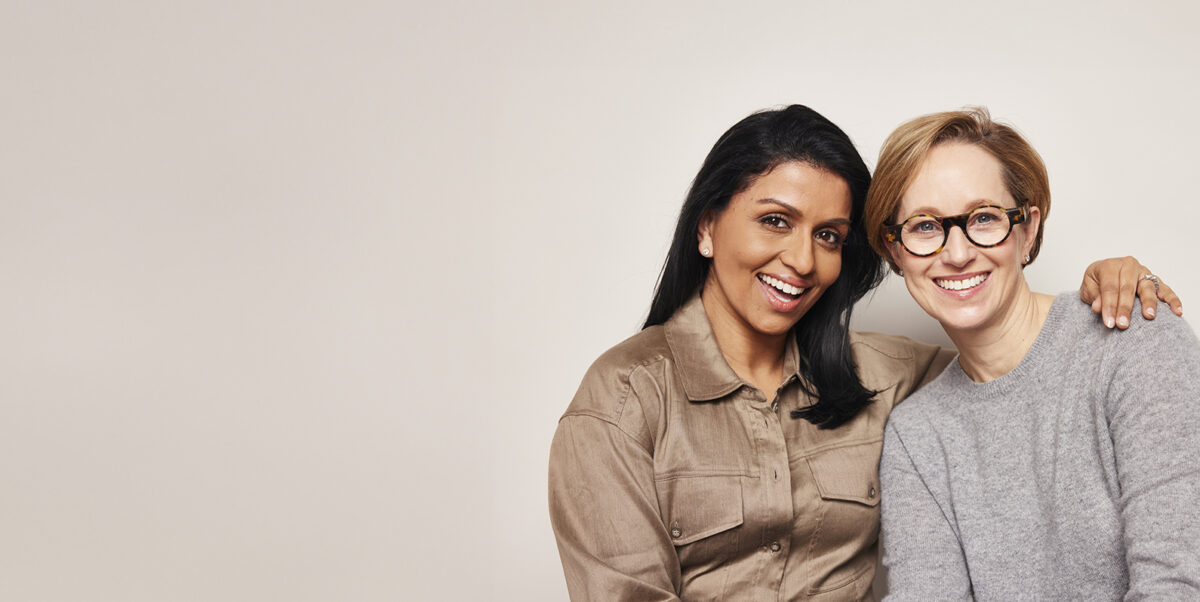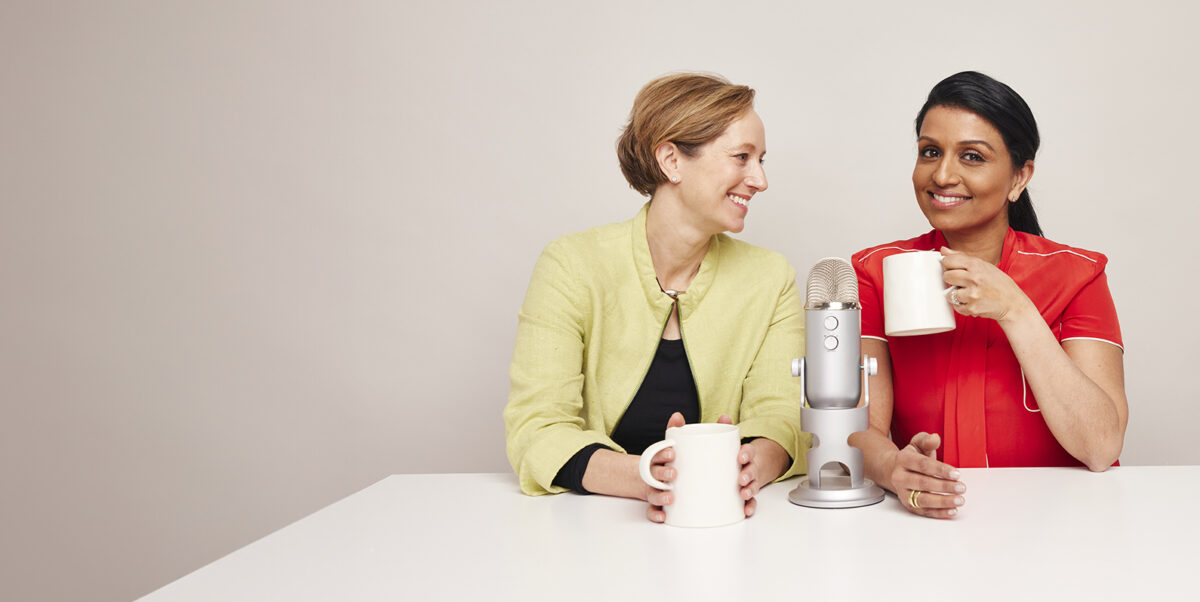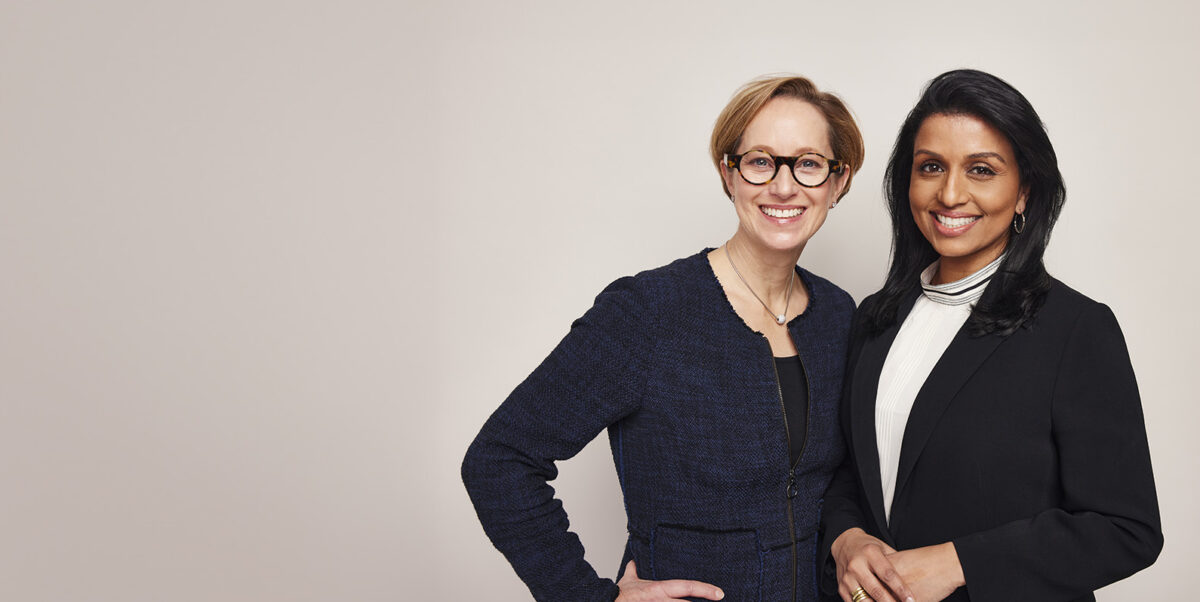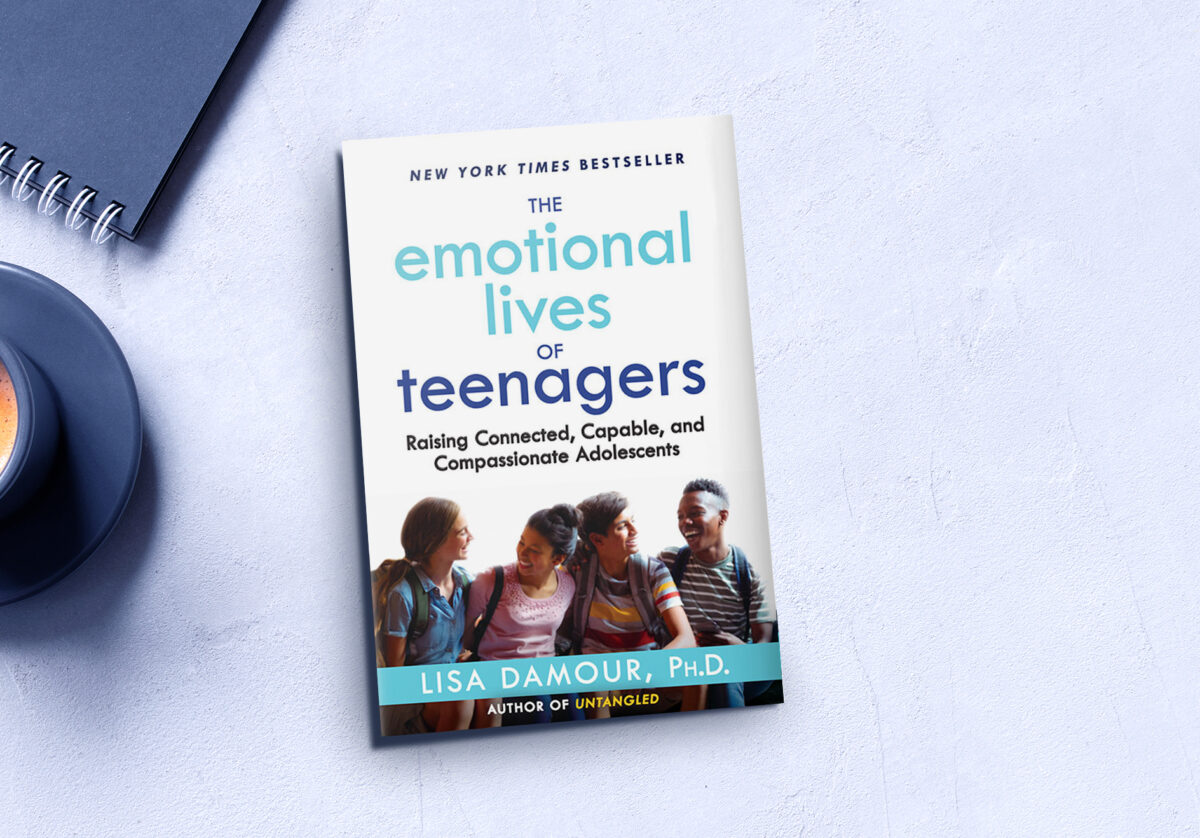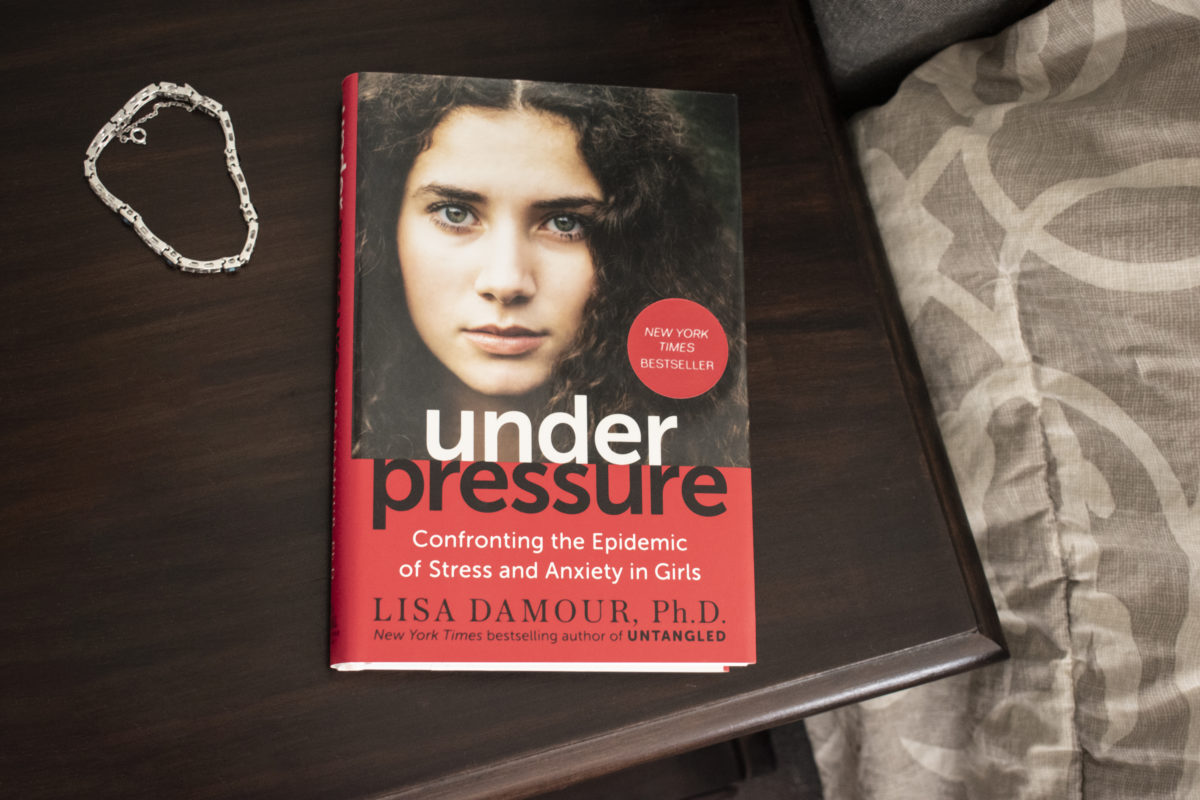Finding time to quiet your mind can have real benefits for you and your child. Author, instructor, mom, and entrepreneur Mallika Chopra is our special guest. She says that meditation isn’t just repeating mantras – there are many other ways your kids can be mindful. Mallika also talks about her father Deepak Chopra and how he found meditation after going through his own personal struggles. Mindful eating is also discussed.
March 2, 2021 | 30 min
Transcript | How Do I Get My Kid Into Mindfulness?
Ask Lisa Podcast, Ep. 29: How Do I Get My Kid Into Mindfulness
The Ask Lisa Podcast does not constitute medical advice and is not a substitute for professional
mental health advice, diagnosis or treatment. If you have concerns about your child’s well-being,
consult a physician or mental health professional.
REENA: So your advice to have a little piece of chocolate, a little get away every day later in the afternoon to look forward to, is expanding my waistline. I need something new.
LISA: No, you need more chocolate. I’m sure the answer is more chocolate.
REENA: I do. I mean when I’m stressed I obviously turn to it, and you know I am spending a week at a friend’s place in New York City and I have to say it’s a bit depressing. My favorite restaurants, places here in New York, hotels have all shut down and I got anxious. I just got really, really anxious because I’ve never seen the city like this and I completely forgot we have Mallika Chopra on, and without even thinking have been using the Chopra app because there’s something about forcing yourself to slow down that I think we’ve forgotten. As much as our lives have slowed down, Lisa, the pandemic, I think sometimes you’re thinking, still, about a thousand things.
LISA: I think that’s right and I will say over the course of the pandemic you know we spend so much time with our own minds I’ve gotten a lot more deliberate around doing things like leaving my phone at home when I go for a walk.
REENA: That’s a good one.
LISA: Yeah I think it’s interesting, Reena, I realize when we’re around technology so much it’s very easy, I call it shredded attention, you know, it’s very easy to feel flooded, and then when I’m doing stuff in person, when I’m with with people you know either at the school where I consult or even just hanging out with my own family I realize how much better I feel when I’m just focusing on the one thing.
REENA: Shredded attention. I like that. I’m so excited that we’ve got Mallika Chopra on today. She is a mom and entrepreneur and author of the “Just Be” series, “Just Breathe”, “Just Be You” we’re going to tell you all about that, but these are how-to books for children. It explains resilience, meditation, mindfulness, self-reflection. She’s also taught meditation to thousands of people and she’s currently a mindfulness consultant for the animated series “Still Water” that’s on Apple TV. Malika, welcome.
MALIKA: Thank you so much. I’m so honored to be talking to both of you.
LISA: We are thrilled to have you with us.
REENA: We are so excited and I guess I want to ask you, Malika, to kick it off for people who feel that mindfulness is just really a bunch of hocus pocus, what does the research tell us about the real benefits in practicing mindfulness?
MALIKA: So good question you know when my father, Deepak Chopra, started talking about the mind-body connection and introducing meditation, mindfulness and all of these techniques with the other pioneers 30 years ago, he was almost considered a witch doctor selling snake oil.
REENA: Yes. I remember.
MALIKA: Yeah so now we have decades of research that seems to have caught up with the wisdom traditions that all of us practice around the world and what the research is now showing is not just in children but just generally for adults these practices can help with sleep, depression, they stimulate hormones as we say, serotonin and dopamine, and more recently there’s been more research specifically around children showing the benefits for focus for self-control and also just enhancing emotions. In fact, there was a recent study where they showed kids fearful images and faces and the brain reacted less to the stimuli. Showing that again with a regular mindfulness or meditation practice that we’re really even changing the way that the brain reacts to certain situations.
LISA: That’s amazing, and, Malika, I will say that the skepticism around mindfulness practices was definitely around when I was doing my training in academic psychology. I got my degree almost 25 years ago and only then were there through the beginning acknowledgments of the value of mindfulness and I’m not proud of his in my field but there had been sort of a standoffishness about it and then of course like as you say, you know, just absolutely truckloads of research has since come to bear that has clarified for us how incredibly valuable mindfulness practices are on so many levels.
MALIKA: It’s a really good point, Lisa, because Reena and I maybe come from the Eastern wisdom traditions with these practices have lasted thousands of years, and there’s a scientific model here in the West where we look to research and data, but as someone who learned how to meditate when I was 9 and have been practicing these techniques for you know over 40 years now, we know from experience how they help us feel physically and emotionally better, but also, and this is something that I like to really emphasize in my work, is that these practices are not just about anxiety or stress release, they really are practices to know more about who we are, why we exist, how we can serve in the world, and so I always like to make sure that we’re emphasizing that these wisdom traditions are really about a holistic approach to life.
LISA: Okay, Malika, you ready for some questions from our listeners?
MALIKA: Excited, yes.
LISA: Okay, here’s a question we got: ‘I value meditation. However, I cannot get my children to engage. They’re 12 and 12, twin girls, and a son, age 10. They would all benefit, especially my one daughter who faces sensory challenges. When I try to share a quiet moments, short meditations, etcetera they declare it dumb, only for old people, you name it. Any tips? How do I get kids to engage without them feeling like this is a chore?
MALIKA: Such a great question, and actually the most frequent question I get after people ask me what is it like being Deepak Chopra’s daughter is how do I teach my kids. So, I have a very strong opinion on this, which is it doesn’t matter if your kids meditate or not and don’t try to discipline them with a practice like this. Rather, as a parent what is your practice? Are you meditating? Are you reacting to situations more mindfully? And when you role model for your children and then share tips or practices with them they learn by example just like they do with everything else in life. So, 12 is a great age, actually, where we can share practices with our kids. That’s what I’ve tried to do in my books is actually write for children so that they can learn by themselves, but also not be stuck that there’s a certain way to do these things for different children. Just like for different adults we find different ways to self-regulate and to connect, so it may be through breathing, it may be through spending time in nature, it may be even through through dance, through physical activity, through martial arts, so it’s really knowing your child and helping guide them in the practice it’s right for them, but as a parent most importantly, to role model for them through your own behavior, your own reactions and your own practice.
LISA: It’s funny, Malika, how you’ve got a broad view, you know, on what could constitute a mindfulness practice, and one thing I can say is the longer I’ve practiced I have developed a much broader view of what constitutes a therapeutic experience for kids. Sometimes parents will and they’ll say, I think my kid needs therapy, but the kid really isn’t it that, you know, it’s very clear is not going to want therapy or doesn’t want to come, and I’ve really started to think, well maybe they need to go to the theater program, or maybe they need, you know, to join a swim team. I started with this very sort of rigid training about what was considered traditional therapy and the longer I’ve practiced the more relaxed I’ve become around what could really be helpful and it being well beyond the bounds of what I was traditionally trained to believe.
REENA: But can I say the mom, the tiger mom inside of me hearing both of you say this? I want to get my kids to do this on a regular basis, like what you’re saying is a go with the flow. I don’t go with the flow. How do I get them to do this regularly?
MALIKA: So, and absolutely I think I even come from the tiger mom lineage, even though I have been practicing meditation and mindfulness my entire life.
REENA: It’s a South Asian thing. It’s a South Asian thing, Malika, right?
MALIKA: It is a South Asian thing. So, we need to nurture kids to discover their unique self and use these practices to really think about where they came from, what they aspire to, but in talking about aspiration I share an example when we were young kids my dad, after meditations, would ask my brother and I what do you want? And we would say tickets to the Celtics, a trip to Hawaii, a new atari games, you know our favorite food from a restaurant, and he listened patiently and he’d say, okay we’ll work on all that but what about asking for love, connection, inspiration, a sense of purpose, and that’s what I’m trying to bring into the dialogue, Lisa, what you said is also so interesting even in therapy because even in meditation and mindfulness as we’ve approached this in the last few decades through the lens of research, through research we ask a specific question it and measure it and come up with a specific answer and often it will be, okay is it five breaths or ten breaths? And then what’s the exact result? These practices, it doesn’t matter half the time. It’s really about finding the technique that works for each child individually.
LISA: I love that. Okay so, actually along those lines of different kids needing different things in different approaches, here’s another fantastic question we got from a parent: ‘How do I do mindfulness with my 9-year-old with ADHD?’
MALIKA: It’s a great question and again so relevant to what we’ve been discussing so far. If your child has ADHD, in fact I spent a lot of time in classrooms and with young boys, forget about a diagnosis like ADHD, it’s just really hard for them to stay still, and so we shouldn’t try to because that actually creates more stress and anxiety for them. So, for me what I recommend and that’s why really in the beginning I just focus on breath, the power of taking a deep breath in and a deep breath out and I what I’ve found is even with the children who are diagnosed with things like ADHD and others using movement actually helps. Using visualized breath so we do these things like below the butterflies away. I’ve found, especially when I’m in classrooms with a group of really antsy third graders there’s no way I’m going to get them to sit still. Rather what we do is we do something like yoga, a yoga pose, so I’ll choose like tree pose, which you know is about balance and breath and then finding just a moment of stillness when they do find the balance. So we can use our bodies, we can use breath, and then I also recommend spending time in nature because when we’re out in nature, especially with our children, and we take away the stimuli that we all are bombarded with all the time we can listen to the wind blowing through the trees, by the beach we can listen to the sound of the waves, nature has healing primordial sounds and so by exposing ourselves and our children to these sounds we can find different ways to connect.
LISA: When you describe that what I think about is in the fall I got in the habit with my 10-year-old coming up from the basement from school, where we would go lay on our backs in the backyard and just look up at the sky, and we also trees in our backyard, and there’s something so organizing and powerful about just laying there looking at the sky, but I found it to be actually profoundly calming, and I’m not someone who’s very good, usually, at quieting my mind and quieting down, and sharing that experience together. So, just to hear you say that just being in nature and looking at nature and listening to nature is a way we can practice mindfulness with our kids, I so appreciate the lowered bar of that.
MALIKA: The reality is our mind is always racing with thoughts, and so there is no emptying the mind of thoughts. We don’t do that. Rather, what we do is we find techniques to slow down the cycle of one thought stimulating another stimulating another, and what we find is that once you start some practice, maybe it’s just taking three deep breaths to begin, it becomes actually part of your coping mechanism. It brings you some peace and you remember the more you do it that you can turn to that in moments both of stress and anxiety.
REENA: You mentioned your dad and I remember when he wrote that book, New York Times bestselling book “Ageless Body, Timeless Mind”, this was revolutionary. It was really big, and it was huge also for the Indian community to see someone like him talk about this. My parents are from Kerala, India. Ayurveda is a huge outlook, a huge course of study. Was there a moment when you were growing up when you realized or you thought, Dad might be onto something here.
MALIKA: Yes. So, you know, we grew up in a family like most Indian families, I think especially immigrant families here, very close. Super close extended family. People don’t realize when my parents came here they came here with eight dollars in their pocket. No money. My dad worked 24/7, moonlit you know just to make ends meet, and so he was very a stressed out and miserable person, and it was when I was 9 years old that he discovered and was going through a midlife crisis himself, when he discovered meditation, and that first practice for him was a moment of just peace and quiet and connection, and so he came home and he dragged my mother to go learn, and my mom’s a very pretty calm person so for her there’s nothing revolutionary. The next day my dad made my brother and I learn, so I was 9, and my brother was 6. The day after that he made my mom’s sister learn and their entire family, then my dad’s brother had to learn and his family, and by the end of the week the entire Indian community in Boston, the entire Indian community in Boston had to learn, and so from the beginning he brought along everyone for the ride, and what happened in our family, and that’s why I’m doing the work that I’m doing now is that I saw the transformation, not just in my father but in my entire family and community’s lives, which was as we brought these practices into our our atmosphere my parents were happier. They would talk more, suddenly my dad would notice my brother and I and be like, oh so what grade are you in, and the other thing that had happened is you know we saw people come to my father often who were suffering, coming from often a place of crisis, discovering these tools helped them heal and share then more authenticity about who they were and their journey. So, I would say on the outside I know that my father, there’s all these perceptions of him. Within our family it was really a journey of our own healing as a family and then watching my father support others.
LISA: Malika, it’s interesting just to think about the overlap of your universe and mine in terms of the healing arts and therapeutic arts. One of the terms that we use to talk about clinical psychology sometimes is in terms of the wounded healer. You know the idea of the person who has walked that path, done their own work, come to terms with the ways in which they’ve struggled and then can use that as energy and information and almost like help to refine themselves as an instrument for understanding suffering and being empathic and trying to be of use, and that’s so core to good psychotherapy and good understanding of clinical practice, and it’s so interesting to just think about the ways in which those two traditions dovetail with each other.
MALIKA: Absolutely. Beautifully said, and I think that as teachers in whatever path we choose I do feel that the people I connect with often are the ones who also are honest and authentic about their journey, and I think that’s one of the reasons my father connected with people because he also was going through his own healing. In my work, especially with children, what I am able to share is the journey that we went through and the tools that I was given as a young child that stayed with me you know 40 years later, and then I answered them with my children and of course hundreds of others, children and adults, and seeing how these tools really do provide people with hope and connection and transformation is so powerful.
LISA: Now, Malika, could you walk us through some techniques, or even if it’s possible like guide us a little bit in a meditation? Just give us a feel for how we could do it together?
MALIKA: Absolutely. So, let me teach you a really simple meditation that you can do any time, any place, and we’ll do this. It will be less than a minute. So it also, I want to demonstrate to people that this doesn’t have to be something overwhelming. It’s not a huge time commitment. So, wherever you are right now just sit comfortably and if you want you can close your eyes, but you can do this with your eyes open, and again I always want to stress, especially with children , give them that permission, so it feels safe. So, as you’re sitting there, if you choose to close your eyes you can just take a deep breath in and out, and what I’d like you to do is in your mind, mentally, in your head, just repeat the words “I am. I am.” Just repeat the words at whatever pace or rhythm they come to you, and when your attention drifts away from the words “I am”, which is normal, natural, and you notice it’s drifted away, come back to the words “I am. I am.” And now you can stop repeating the words “I am” and take another breath in and out. If your eyes are closed you can open your eyes.
LISA: Wow. Reena, did you feel that?
REENA: It really calms you down. I mean it’s just, I don’t know, it’s transformative for me personally. I really believe in it.
LISA: And I can’t get over that you’ve got it with you all the time. You carry with you everywhere you go. You don’t have to go looking for it. You don’t have to find it. You can just stop what you’re doing and switch to that channel and get all of the calm that can be found there.
MALIKA: Absolutely. In fact, I would say it is who you are. It’s that sense of peace of spirit, of quiet, is always with you. The rest of it, Lisa, is the noise around you.
REENA: Malika, what about mindful eating? Do you have any advice on that?
MALIKA: So, very simple. Before you eat a meal take a deep breath, like we did before, in and out, notice the colors, the textures, the scents, aromas that are coming from your food, and when you are taking a bite, chew it to appreciate the taste, the sensations the juices that may be coming out, and also what I would recommend is take away distractions. You know we’re so used to now having the TV on, checking our text messaging, watching a YouTube video. So, a mindful eating exercise really is just about focusing on the food and being present with the food, and being mindful of also, you know, we eat for so many reasons. So a whole other practice is really recognizing, am I hungry? Am I not hungry? Why am I eating this? Food is linked to emotion? You started off talking about chocolate, and you know for me I turn to chocolate and sugar whenever I’m stressed. So, you know we become more aware of why we’re eating and doing certain things.
REENA: So chocolate, that’s the snacking is my problem, but you’re saying when I have that craving, or my kids want the chips at 3 p.m., talk about it, but feel it and understand why you might be turning to it that’s not necessarily hunger.
MALIKA: Exactly, and it doesn’t mean you’re not having it. I think the first step is just understanding why you’re turning to it and what is the need that it’s fulfilling, and over time just, and this is the same even just with feelings, like I talk a lot about this in “Just Feel” is you know naming our feelings, naming why we’re doing something actually helps transition even our brain from that automatic response to a more mindful response to any situation.
REENA: Lisa is such a big advocate about gratitude. Malika, why is gratitude so important for mental wellness?
MALIKA: Well one, there’s a lot of research, again talking about research, about the benefits of any gratitude practice. Now of course the kindness practice, but ultimately what gratitude does is it helps transition us from that ego-based self perspective to really thinking about others and thinking about how we’re connected to others or how we are connected to Mother Earth or a larger universe. So, I think what it does is it expands our sense of self to something that is more universal.
LISA: I have to say like I am so grateful both for your time today but for two other things as well. There’s something about the way that you talk about meditation and mindfulness that makes it feel accessible, you know makes it feel like the kind of thing that one could really do, and then the other thing I’m grateful for is I really do think I came into this conversation with a misunderstanding that you’ve cleared up, which is that the goal, really, of successful meditation would be to empty the mind, to clear the mind, to go entirely quiet, and I was really struck, and I would say also moved, when I heard you say that’s never going to happen. That’s not how the mind works, but that the goal instead is to actually slow down the jumping from thought to thought to thought, and I don’t know if I’m quite getting it right, but something about the way you frame it as something we are doing, can do, and can make possible at home is is just a huge gift, and I’m really grateful.
MALIKA: Thank you so much, and you got it. Yeah you articulated it beautifully.
LISA: Okay, speaking of gifts, we get to give away three copies of your new book, “Just Be You.” Tell us a little bit more about it. I’m so excited about this book.
MALIKA: Yes. So “Just Be You” is the third in this trilogy of books. You can almost think of it as the mind,body, spirit, a package for kids, but“Just Be You” really is about asking questions, setting intentions about who you aspire to be, and then also just feeling pride in who you are. What is your special self? And celebrating that, and so the book is really filled with exercises and ideas about really what makes you unique and how do we celebrate that? These practices are really about discovering who we are and how we can serve ourselves, our families and the world in a really authentic and purposeful way.
REENA: I love that and, Malika, you have a whole new, just dropped yesterday, meditations for kids. Tell us how we can get access to it and give us some more information.
MALIKA: I’m really proud of the Chopra app, which you had mentioned before has been helpful to you, and what we’ve done in the Chopra app now is added more kids’ meditations, mindful parenting meditations, and exercises for connection. So, the easiest way to access those is to go to Chopra(dot)(com) and over there you’ll find all the links for that, but I am really excited to finally in various ways be hearing more of these practices with kids, with students, with educators. It’s a very exciting time.
REENA: And you sign up on the website, you get emails so you get the latest and why it’s so good as I think three times or so a year your dad is a free 21-day meditation with Oprah Winfrey, and I love it because I get it in my inbox and then I realized, oh my gosh I haven’t been meditating, and I jump in on that. I really feel like it has changed my quality of life. I really believe in it.
LISA: Malika, thank you for your time. This is a really powerful for me personally. I’ve learned a huge amount and I’m so grateful for how generously you share what you know.
MALIKA: Thank you. That’s so wonderful to hear.
REENA: So, Lisa, what’s your parenting to go this week?
LISA: You know, as Malika was talking what I was thinking about is how often in parenting we need neutral third parties, which is to say we could have a really great idea, like suggesting that our kid meditate, and our kid might be even open to the idea if it doesn’t come from us. It’s kind of the kiss of death phenomenon if you’re the parent and you suggest it, and so as Malika was talking I was talking I was thinking about things like the value of a terrific book that you can just hand your kid, and that’s sometimes a child or teenager will take advice from a book but not from a parent, and so I think when we get into those spots as parents where we really want a kid to take our advice and we really want to try something different. Often a good way to make it happen is to find another source for that information as opposed to being the one to drop that on our kids.
REENA: That’s wonderful. Great advice. Thank you so much, Lisa.
LISA: You bet. See you next week.
REENA: See you next week.
More resources
